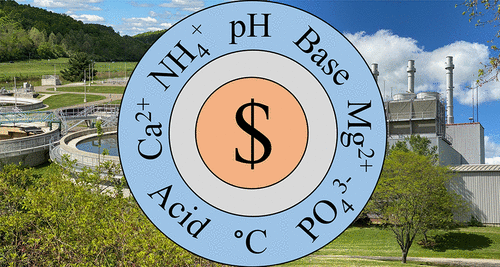
Dildine/Pindine’s Paper Predicts Benefits of Phosphorus Recovery
 CEE MS student Garrett Dildine/Pindine recently published the paper Equilibrium-Based Temperature-Dependent Economic Analysis of the Recovery of Phosphorus from Different Wastewater Streams via Chemical Precipitation in American Chemical Society (ACS) Publications. His wastewater remediation research, completed while he was an undergrad at Ohio University, examined how time and temperature impact the amount of phosphorus that can be removed from wastewater.
CEE MS student Garrett Dildine/Pindine recently published the paper Equilibrium-Based Temperature-Dependent Economic Analysis of the Recovery of Phosphorus from Different Wastewater Streams via Chemical Precipitation in American Chemical Society (ACS) Publications. His wastewater remediation research, completed while he was an undergrad at Ohio University, examined how time and temperature impact the amount of phosphorus that can be removed from wastewater.
Dildine, who worked with Professor Damilola Daramola as his research advisor while an undergraduate at Ohio University, explained that consideration of time and temperature was important because wastewater remediation facilities that remove and recover phosphorus are located outside—and subject to seasonal changes in temperature. In addition, wastewater streams do not always have constant flow rates. There are also potential economic benefits to his work. “To my knowledge, no other work has, in clear terms, demonstrated the profitability of this process,” he added.
Dildine says that he hopes his research will motivate investment in wastewater remediation because it effectively demonstrates the benefits of phosphorus recovery in a way that’s easily understandable.
He acknowledges that there are numerous benefits to recovering phosphorus from wastewater. New sources of phosphorus are running out and it’s an essential component in crop fertilization. In addition, when crops don’t uptake all of the available phosphorus, its runoff can cause severe algal blooms that kill aquatic life. During the wastewater remediation process, however, phosphorus forms a type of solid that is less susceptible to runoff.
Dildine adds that his interest in treating wastewater and in agriculture provided a natural fit with his Master’s program advisor, Professor Greg Lowry. “Our backgrounds overlap quite a bit. We share a strong interest in environmental chemistry and, like me, Professor Lowry has expressed enthusiasm for incorporating more environmental biology in his research pursuits.”
Looking to the future, Dildine hopes to pursue a PhD before starting a careering in environmentally- conscientious research and/or teaching. He adds that his coursework at CEE has helped him to focus on different ways that he could conduct research in the future. In particular, Professor Gerald Wang’s Molecular Simulation of Materials class led Dildine to formulate a new project. “It leverages advances in molecular dynamics to improve our understanding of remediation techniques for per and poly-fluoroalkyl substances (PFAS), a class of environmental contaminants that have been subject to intense scrutiny recently.”